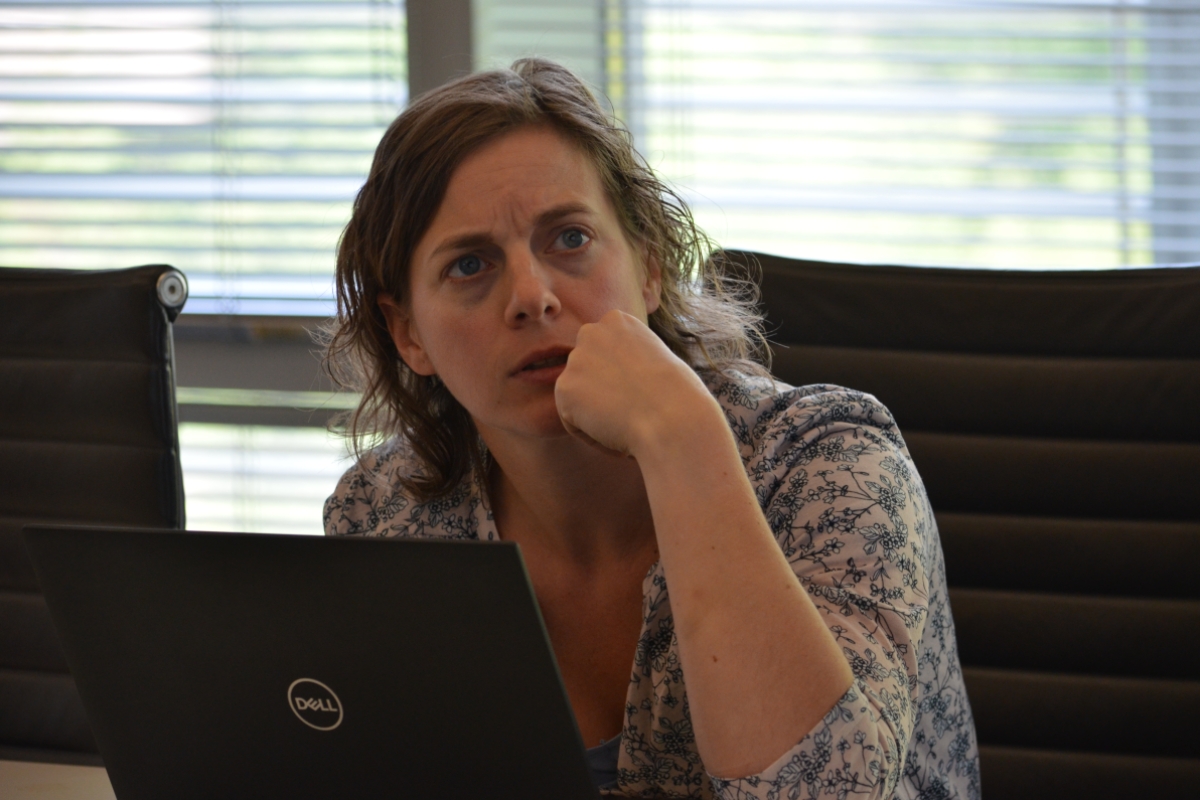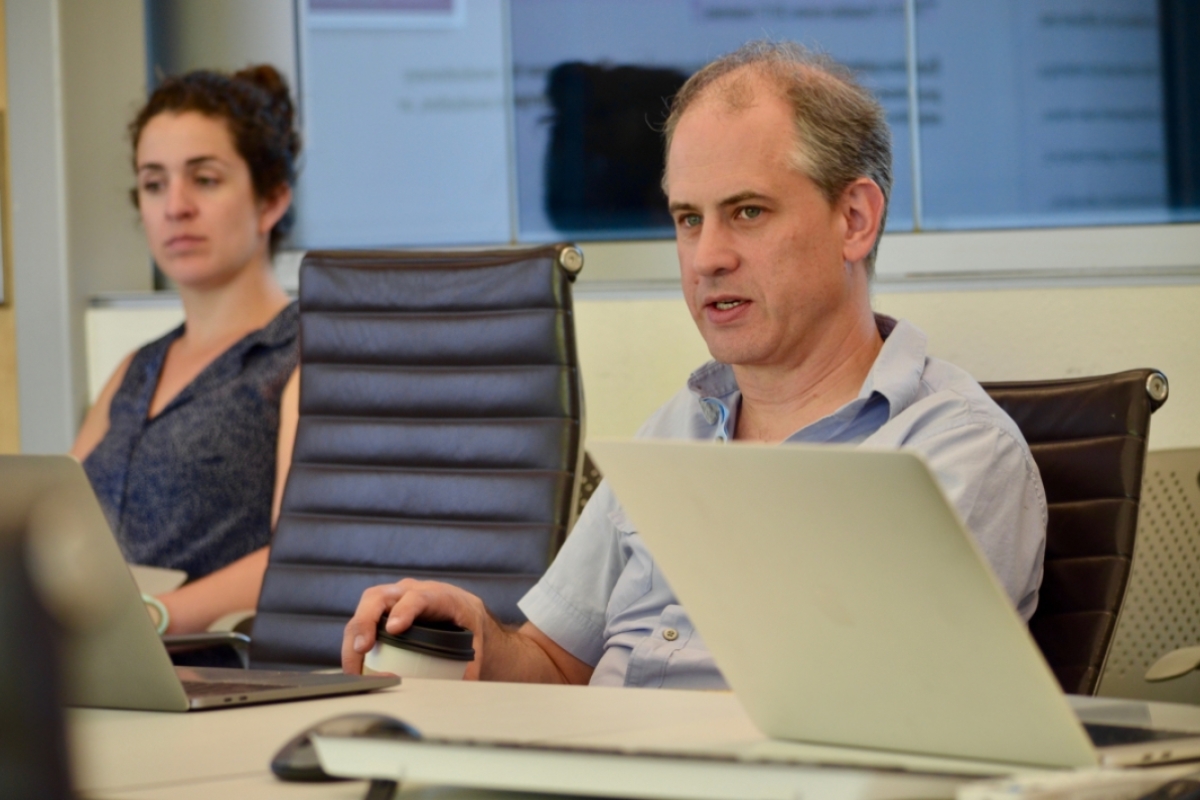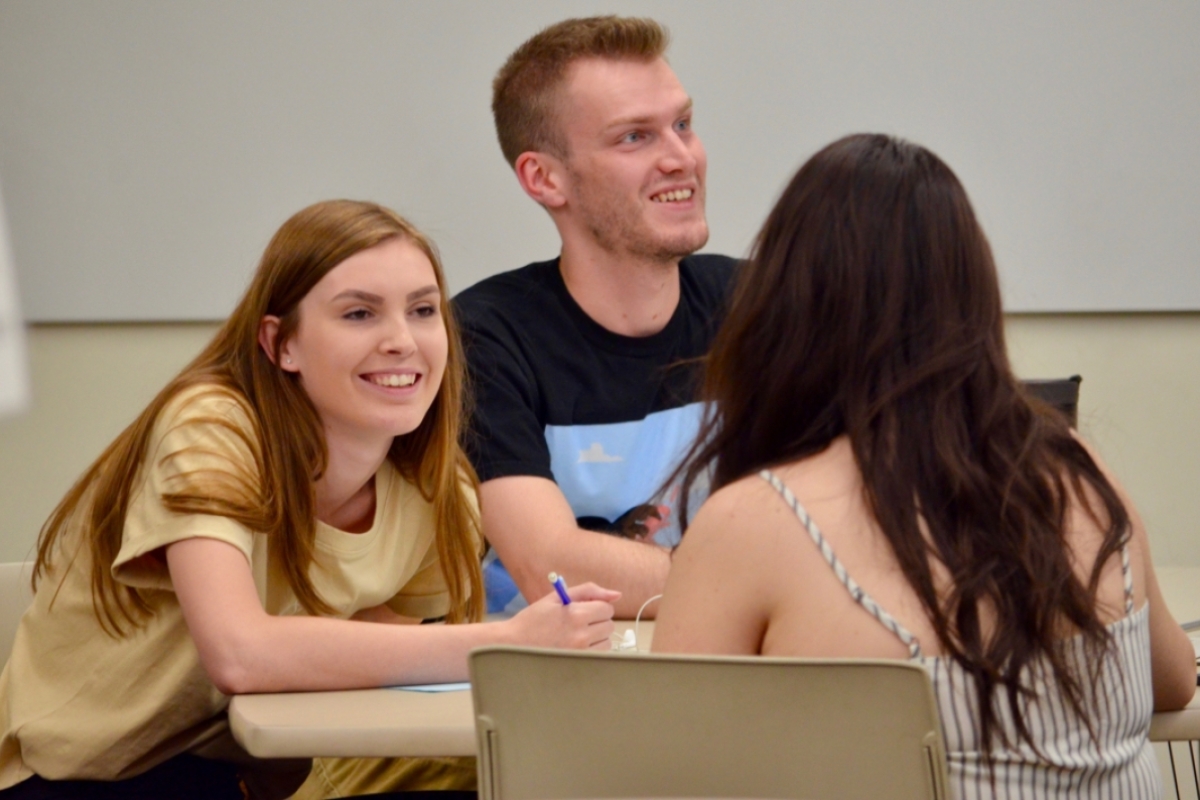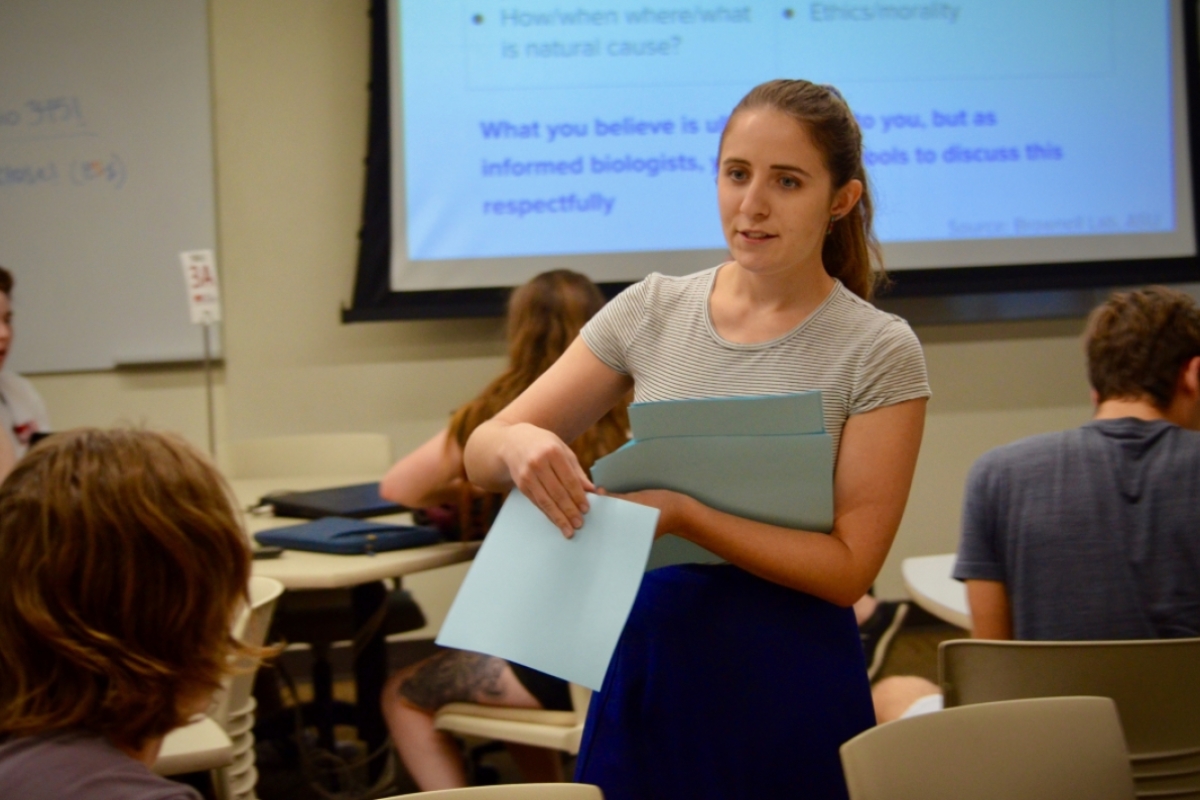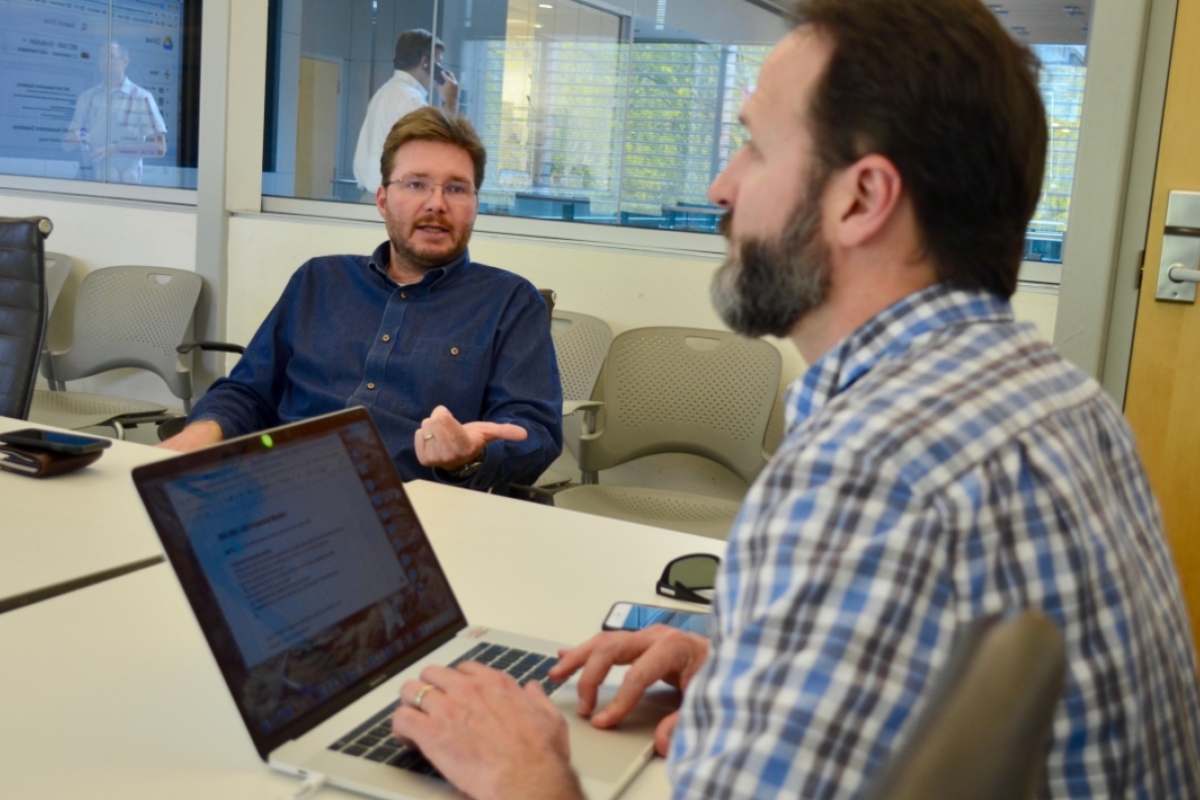ASU develops world’s first adaptive-learning biology degree

Biology students in Assistant Professor Silvie Huijben's BIO 345 course take a final exam last spring. The students participated in the newly launched BioSpine Initiative. Photo courtesy Sandra Leander/ASU
If you sit in a typical lecture hall at any university, you’ll likely see some students distracted by their phones, or worse, napping or tuned out.
Now, Arizona State University is doing a major rethink of the big lecture hall format to make room for innovation in its science classrooms. It has developed the world’s first adaptive-learning biology degree at ASU's School of Life Sciences.
“We are moving away from mass production to mass personalization," said Dale Johnson, director of adaptive-learning initiatives with EdPlus at ASU. "We used to teach everyone the same thing at the same time. Now, we’re connecting the right student to the right lesson. We are changing the structure of higher education from static to dynamic.”
Johnson has been working with Michael Angilletta, professor and director of undergraduate programs in the school, and a diverse team of faculty and staff in the school to build its biological sciences degree program in a new adaptive-learning platform called BioSpine.
“Other universities are using active learning and adaptive learning tools," Angilletta said. “However, none of them are attempting to do it at the incredible scale that we are.”
Whether online or on campus, students using this platform will encounter a “scaffolded” support structure that personalizes each student’s learning throughout their four years in the degree program.
The technology is being co-created between ASU and a company called CogBooks. Adaptive learning is a highly interactive format that will adjust to the student’s learning needs in real time.
“In college, you may have heard of faculty members stating that certain students would not make it through the program and erroneously align that with rigor,” said Joshua Caulkins, assistant director of undergraduate programs with the school. “With the support we are creating through adaptive learning, as well as true assessments that measure the range of student learning, students will receive support and direction when course material is especially challenging.”
The degree program uses the BioSpine adaptive-learning courseware rather than textbooks. Faculty members link learning activities to the platform, which then allows students to progress through more challenging coursework when they are ready, or step back and get support in relearning something from a previous course or chapter.
Adaptive learning
Research has shown that the standard lecture hall format does not necessarily engage students in the material, nor is it effective in producing exceptional performance in exams.
This has been especially challenging in science classrooms, where faculty have to use big lecture halls due to demand.
Several years ago, the School of Life Sciences began working with CogBooks to explore new ways to help students learn biology.
Jim Thompson, CEO of CogBooks, explained the concept.
“To appreciate the power of adaptive technology, it helps to focus on the importance of making connections when we are learning,” Thompson said. “We build new learning by making connections to what we already know and by using this existing knowledge and skill set. If we are struggling to learn a new skill or concept, it is most likely because we are missing key prior learning. Effective adaptive learning identifies these gaps or misconceptions and helps resolve them.”
They first tried out the adaptive learning format on a problem area known for poor performance and high dropout rates, nonmajors taking biology courses to fulfill a science requirement for their majors.
In 2015, the company partnered with professors and instructional design staff from ASU’s EdPlus and the School of Life Sciences to develop a new introduction to biology course for nonmajors. Basically, the textbook was replaced with an online experience similar to a textbook, but responsive to a student’s needs.
The results of the first effort were impressive.
“In its first semester, we saw student pass rates, in a nonmajors’ Biology 100 course called The Living World, improve by 24% and dropout rates reduce by 90%,” Thompson said. “This level of success from such a modest investment convinced us we were doing something right. These results have been replicated at other schools, over multiple years, and have been validated by large-scale, independent studies.”
But would the same program also work for life science majors, where content becomes more challenging as students advance from freshman to senior courses? After the success of the pilot course, the effort has been rapidly expanded. So far, 16 courses have been built in support of the school’s BioSpine project.
Early results have shown that both students and faculty are embracing the new adaptive learning format.
Flipping the classroom
To date, as many as 50 faculty and 10 staff members in the life sciences are meeting regularly to advance the project.
“For the first time, we’re thinking about education as a connected path rather than a series of courses. We’re asking our faculty to consider what students need to know to work in a world that is changing dramatically, and to work together to create a unified curriculum,” Angilletta said.
During meetings, faculty and staff work to align what students should learn across a whole degree, as well as within a specific course. To many, this concept is radical.
“I have been surprised by how collegial our colleagues have been during this process," said Karin Ellison, director of the life science ethics program at the school. "This process could be seen as really disruptive to traditional thoughts on intellectual freedom. Everybody teaches their own course and people don’t talk to one another.
“They’re interested in how students might have a common experience across different experiences and how that builds into a whole curriculum.”
Life sciences faculty members who teach evolution were some of the first to embrace the new technology.
“I volunteered for this initiative because I care a lot about teaching evolution,” said Carlo Maley, associate professor with the school. “It is one of the most important tools we have for understanding our world, and I want to do a better job teaching it to our students. In addition, I was uncomfortable not knowing how much of what I was teaching, the students had seen before in previous courses. Was I wasting their time?”
Maley said their faculty group went through upheaval last fall. They changed the textbook and translated the new one into the CogBooks adaptive-learning platform. Then, they “flipped” the classroom — delivering instruction online and outside the classroom, and providing interactive and hands-on activities during class time.
The results were enthusiastically received.
“Beckett Sterner and I got an ovation at the end of the junior-level major’s course, Evolution — Biology 345, and also at the end of the class on zombies. We really appreciated that, given how hard we had been pushing the students and how many glitches there were in the beta testing,” Maley said. “With active-learning exercises, they really have to be engaged. They can’t sit back and let a lecture wash over them. While the course was much harder, I think they got a lot more out of it than previous students."
Next steps
Key BioSpine features include aligning the curriculum, integrating content, shifting faculty roles from lecturers to leaders and empowering faculty to see when a student needs intervention. During the upcoming academic year, the BioSpine team will focus on aligning the content among the courses.
The group also will be using a nationally-recognized standard for reviewing the courses. Three reviews will be completed this summer and as many as a dozen course reviews each summer going forward.
Designing an entire degree program in adaptive learning comes with many challenges, but the goal remains true to ASU’s charter — to increase access to student populations and achieve success. This success is linked directly to Arizona and the nation’s future success by creating a more educated workforce and a highly diversified economy.
“In looking at our successes to date, we already see greater persistence and greater performance by our students. This dynamic program is the future of education, and ASU is leading globally in this effort,” Johnson said.
More Science and technology

Applying AI to microelectronics manufacturing
Rivers flow across the planet’s surface, carving deep valleys and intricate canyons. Likewise, makers of microelectronics direct plasma, an ionized gas, to travel over silicon wafers, etching…

Applied Materials invests in ASU to advance technology for a brighter future
For nearly 60 years, global giant Applied Materials has been hard at work engineering technology that continues to change how microchips are made.Their products power everything from flat-panel…

Meet ASU engineering students who are improving health care, computing and more
Furthering knowledge of water resource management, increasing the efficiency of manufacturing point-of-care health diagnostic tools and exploring new uses for emerging computer memory are just some…




